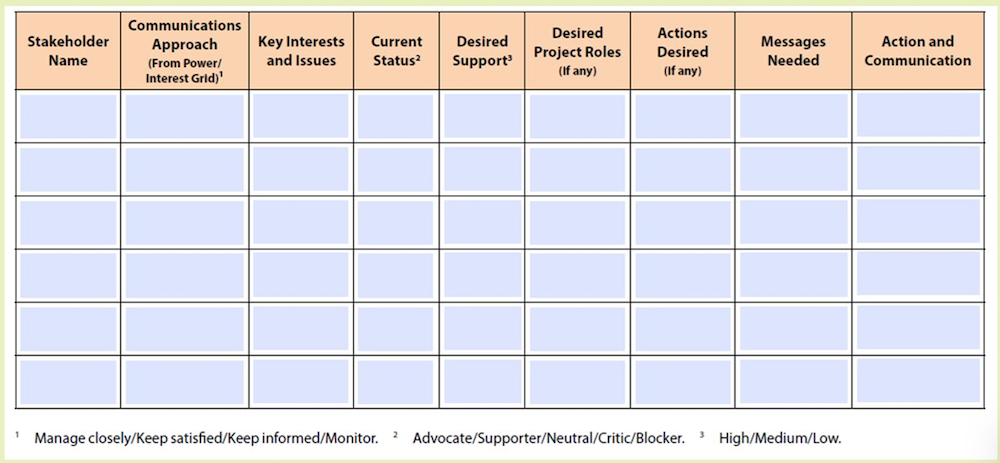To complement our series of QuickReads covering measurement, we will now explore Failure Demand (FD).…

ChangeWise Quick Read: How to Write a Winning Communication Plan
Effective communication is crucial in ensuring the success of projects. Having a well thought out and carefully managed Communication Plan will help to make sure you are providing timely, valuable communication to stakeholders. In this article, we take a quick look at the benefits of a Communication Plan and how to create one.
To get the most out of this Quick Read, we suggest you take a look at these ChangeWise articles first: The Power Interest Grid and Managing Stakeholders – Advocate/ Neutral/Blocker technique.

Photo by Volodymyr Hryshchenko on Unsplash
Tell me a little more about Communication Plans…..
A Communication Plan contains a collective view of your Stakeholders. It considers where they sit in terms of power/interest in your project, their status (Advocate/Neutral/Blocker) and the desired status, along with relevant actions, required messages, communication frequency, medium and the purpose of any communication goals.
Providing large and generic quantities of project information to stakeholders will water-down key messages and likely go unread. For maximum impact, consider the needs of each stakeholder.
Sounds good….can you give me an example?
Absolutely! There are many different templates available and depending on the project management methodology your organisation uses, there may be a standard template already in place for use. Whatever you go for, the plan should be simple to use, easy to follow and regularly updated.
If you can’t find anything, the simple plan below will be all you need for successful stakeholder communication:

Thanks, can we look at each section and consider what I need to include?
Absolutely! We think you’ll find it quite straight forward……
Populating your Communication Plan
Stakeholder Name
Include all stakeholders involved in your project. Stakeholders are any one or any group of individuals who have an interest in your project/lean review. They might be positively or negatively impacted by the deliverables.
List both the title and name of stakeholder in this section, stakeholders often move around organisations – but their influence can remain.
Communications Approach
This information is derived from your Power/Interest Grid. It confirms how you need to manage Stakeholders based on their influence/interest in the project. There are four options:
- Manage Closely
- Keep Satisfied
- Keep Informed
- Monitor
Key Interests and Issues
This section contains details of specific areas of interest/concern to the stakeholder. Considering these details will ensure you communicate relevant information and seek stakeholder opinion/advice to avoid potential issues going forward.
For example, your project may not directly benefit the Marketing IT Team, but it will impact their resources if technical changes are required. Keeping this team updated ahead of any potential changes will allow them to plan their resource and provide timings for any work required.
Current Status
Understanding how stakeholders are likely to react to your project enables you to engage with them in the most effective way. A simple technique for this is Advocate/Neutral/Blocker method (see our Quick Read Managing Stakeholders – Advocate/ Neutral/Blocker technique for details on how to complete this).
Desired Support
Work through your list of Stakeholders and think about the desired level of support you would like; high, medium or low?
Desired Project Roles
In order to be successful, do you have a desired role on the project for this stakeholder? For example, thinking about our Marketing IT Team, would you like someone from this team to act as a key advisor during the business requirements gathering phase? Or perhaps they need to be an official sign-off/approver for any requirements? Having their official engagement will make sure project requests can be achieved in realistic timeframes.
Actions Desired
What specific actions (if any) are required from this Stakeholder? Perhaps they have a strong influence over a particular group of people impacted by your project and it would be beneficial for them to communicate their support for your project?
Messages Needed
To gain their support, what message does your stakeholder need to hear? This will support the overall company vision and relating KPIs but Stakeholders may have specific interests such as financial benefits or improving customer/employee satisfaction.
Action and Communication
Now that you have all the information needed, think about what action is required to communicate the desired information to your stakeholders. How will you keep your high interest/high influence stakeholders engaged and how will you manage the critics to ensure they do not negatively impact your progress?
Think about these actions in relation to your available time and resource to make sure it is achievable.
⭐️ Remember!! The Communication Plan is not static and can change over time. Revisit your categories regularly to consider these changes and ensure they are reflected in your planned action/communication.

Photo by Alena Darmel
In Summary
Having a well thought out and carefully managed Communication Plan will help to make sure you are providing timely, valuable communication to stakeholders. Completing this work upfront will help to remove issues and delays that may arise later in the project.
Looking for more information? Get in touch with the ChangeWise team at info@changewise.co.uk
ChangeWise believes employee engagement is the foundation for successful Change. Training and coaching your people to use simple continuous improvement techniques will enable your organisation to continuously adapt and stay ahead in a constantly changing and challenging environment.
For updates and interesting Lean Change insights, connect with us on LinkedIn.



